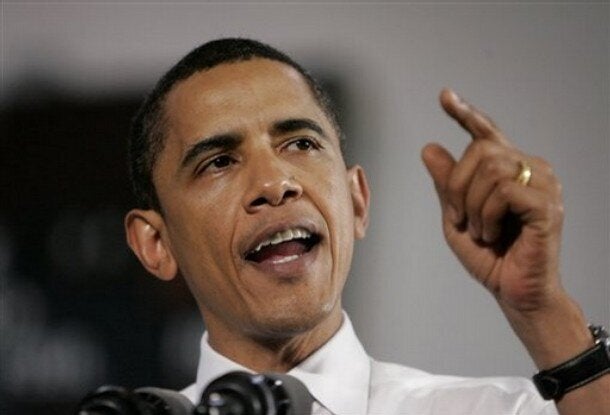
There are two myths circulating in Washington. The first is that current economic conditions are too dire for the White House to undertake major initiatives beyond stabilizing the economy. The second related myth is that President-elect Barack Obama will be a political pragmatist and therefore avoid expansive and controversial proposals.
Yet a closer look at FDR's First Hundred Days, which many commentators are currently comparing to Obama's First Hundred Days, suggests that the president-elect can act amidst this crisis, serving both as a pragmatist and an innovator at the same time.
Professor Anthony Badger's FDR: The First Hundred Days (Hill and Wang) reveals the truth behind the myths. America was in a much worse situation in 1933 than it is today. The workforce faced a rate of twenty five percent unemployed and the entire banking system literally stood on the brink of collapse.
The federal government remained highly underdeveloped. Officials didn't even have basic economic data. Before 1935, government officials lacked solid figures about the exact levels of unemployment. The Federal Reserve system was only created in 1914. There wasn't even a mass income tax. So the issue in 1933 was not just whether the government could respond to the economic crisis, but if officials would be willing to build the institutions needed to handle a challenge as severe as the Depression.
Badger's portrait of the New Deal also shows readers how FDR was a pragmatic experimenter. He combined characteristics that today are said to be at odds. FDR tried many programs at once and he did so within a short span of time. Some policies, such as public relief, were directly aimed at improving the state of the economy while others, like the Tennessee Valley Authority, were not.
FDR understood that most Americans did not want socialism nor would they tolerate the unlimited growth of the federal government. His bold actions were also pragmatic in the sense that the president included checks within many of his programs, such as a self-financing tax in the agricultural program as well as the use of state and local oversight for many federal policies.
The president always kept his eye on the budget. As he moved his proposals forward during the First Hundred Days, he sent a strong message to the cabinet and Congress through the prominence of Lewis Douglas, the fiscally conservative Budget Director. Secretary of Labor Frances Perkins, one of the most liberal voices in the administration, noted that 'every proposition presented at Cabinet meetings is referred to him [Douglas] to see how it affects the Budget and once it is referred his suggestions are not generally limited to finance."
To be sure, some of the programs that came out of this blizzard of pragmatic experimentation were colossal failures. The National Industrial Recovery Act didn't achieve its goals because it granted too much power to big corporations and relied on too much voluntarism.
But pragmatic experimentation also bred success. While critics on the left would later say that FDR refused to go far enough, Badger shows how the administration was able to revitalize the nation's infrastructure and create a framework for economic recovery. The Tennessee Valley Authority and Security Exchanges Commission, for instances, established rules and regulations that would "facilitate... private enterprise" and created conditions needed for long-term economic recovery.
Badger writes:
"after one hundred days of frenzied activity, sixteen pieces of major legislation gave the federal government the power to decide which banks should or should not reopen, to regulate the stock Exchange, to determine the gold value of the dollar, to prescribe minimum wages and prices, to pay farmers not to produce, to pay money to the unemployed, to plan and regenerate a whole river basin across six states, to spend billions of dollars on public works, and to underwrite credit for bankers, homeowners, and farmers."
When the First Hundred Days were over, the economy remained in a state of severe depression and Americans were still frightened about what would come next.
But FDR had successfully established the framework for an even bolder set of policies in the coming years and he had created a sense of public confidence that the government would be able to guide the nation through the crisis. The First Hundred Days also created a powerful commitment from the federal government to the citizenry to achieve security. This commitment has in many ways survived the years since the 1980 election pushed the country toward the right.
More soon from the academy....
Julian E. Zelizer is professor of history and public affairs at Princeton University's Woodrow Wilson School. He is the co-editor of "Rightward Bound: Making America Conservative in the 1970s" (Harvard University Press) and is completing a book on the history of national security politics since World War II that will be published by Basic Books. For more information, see www.julianzelizer.com